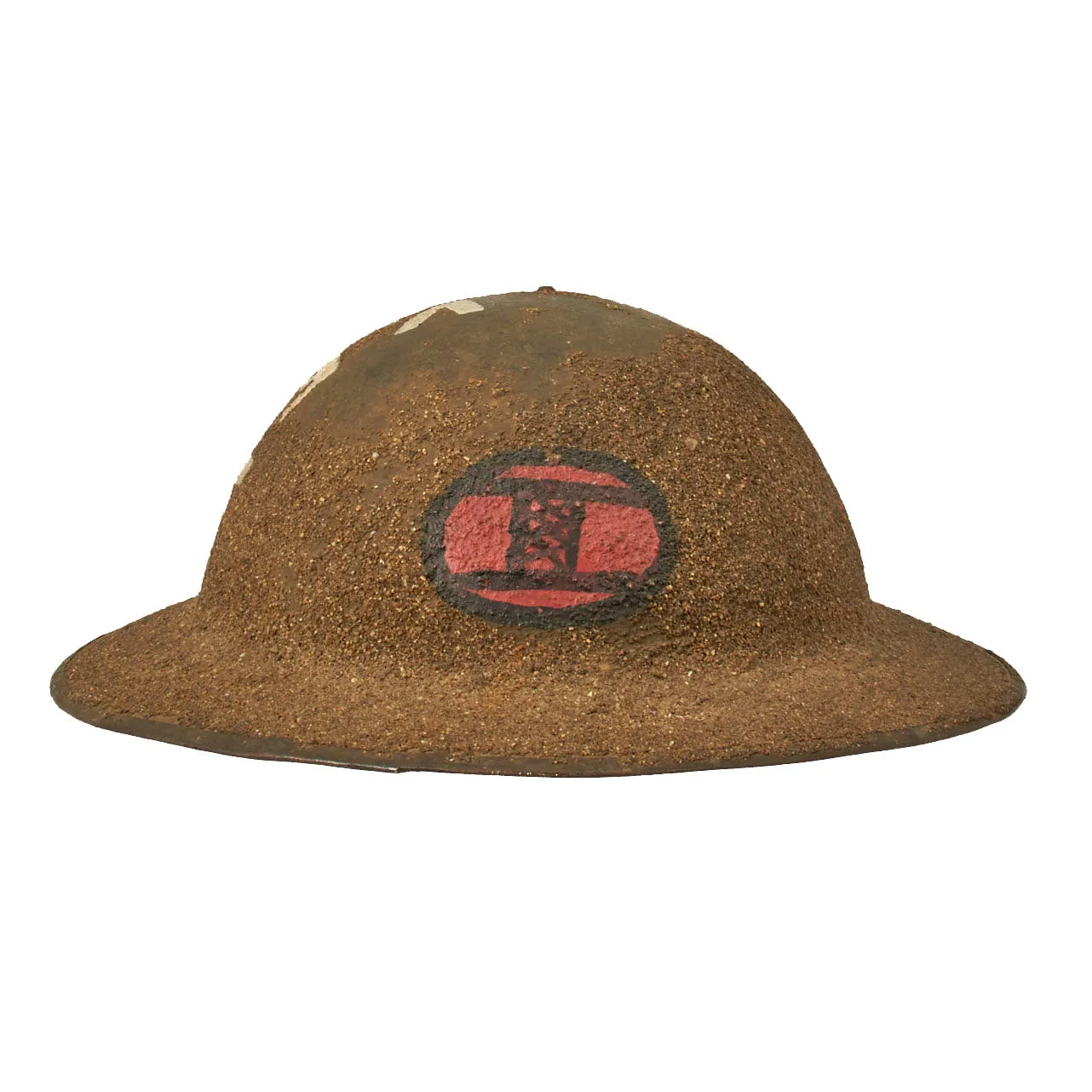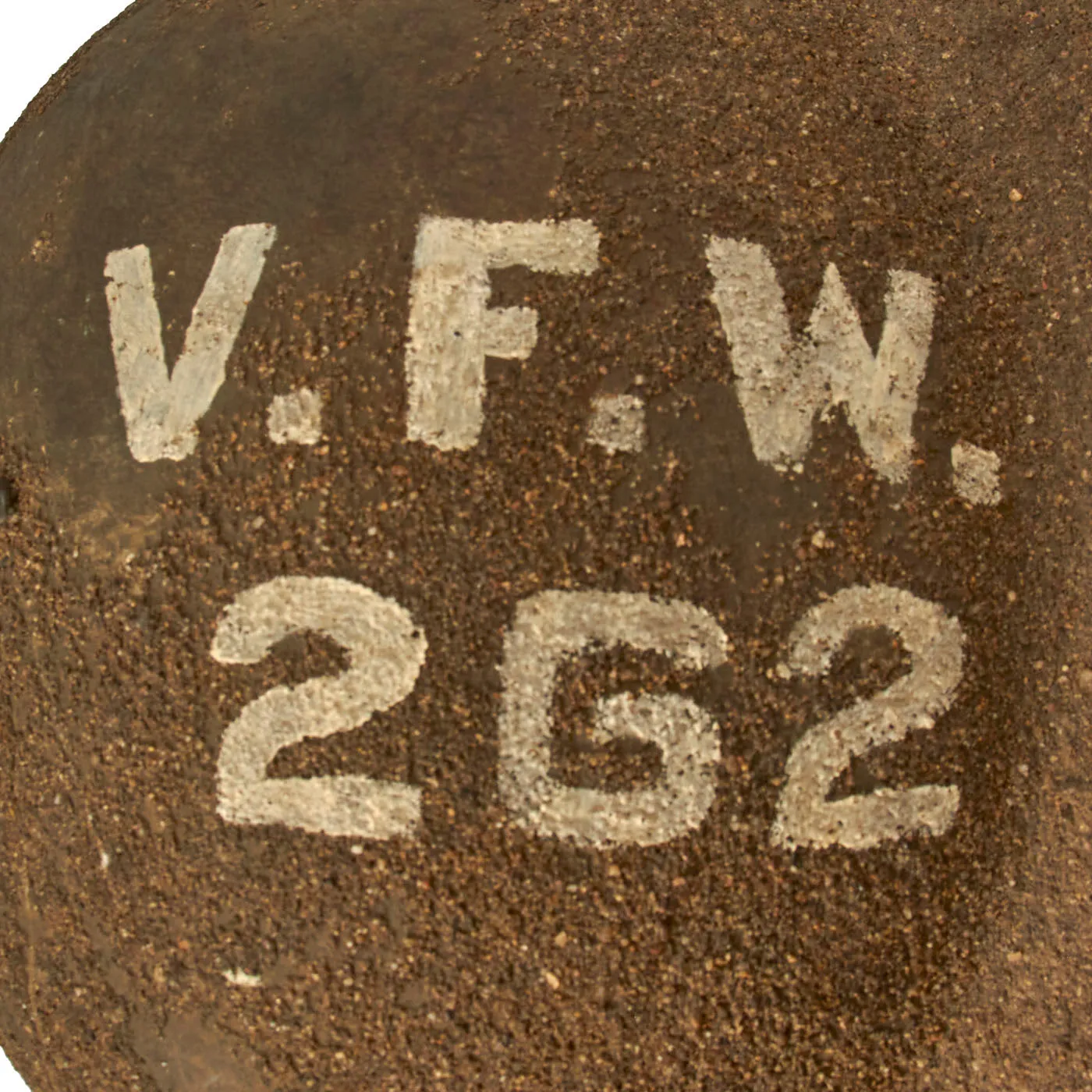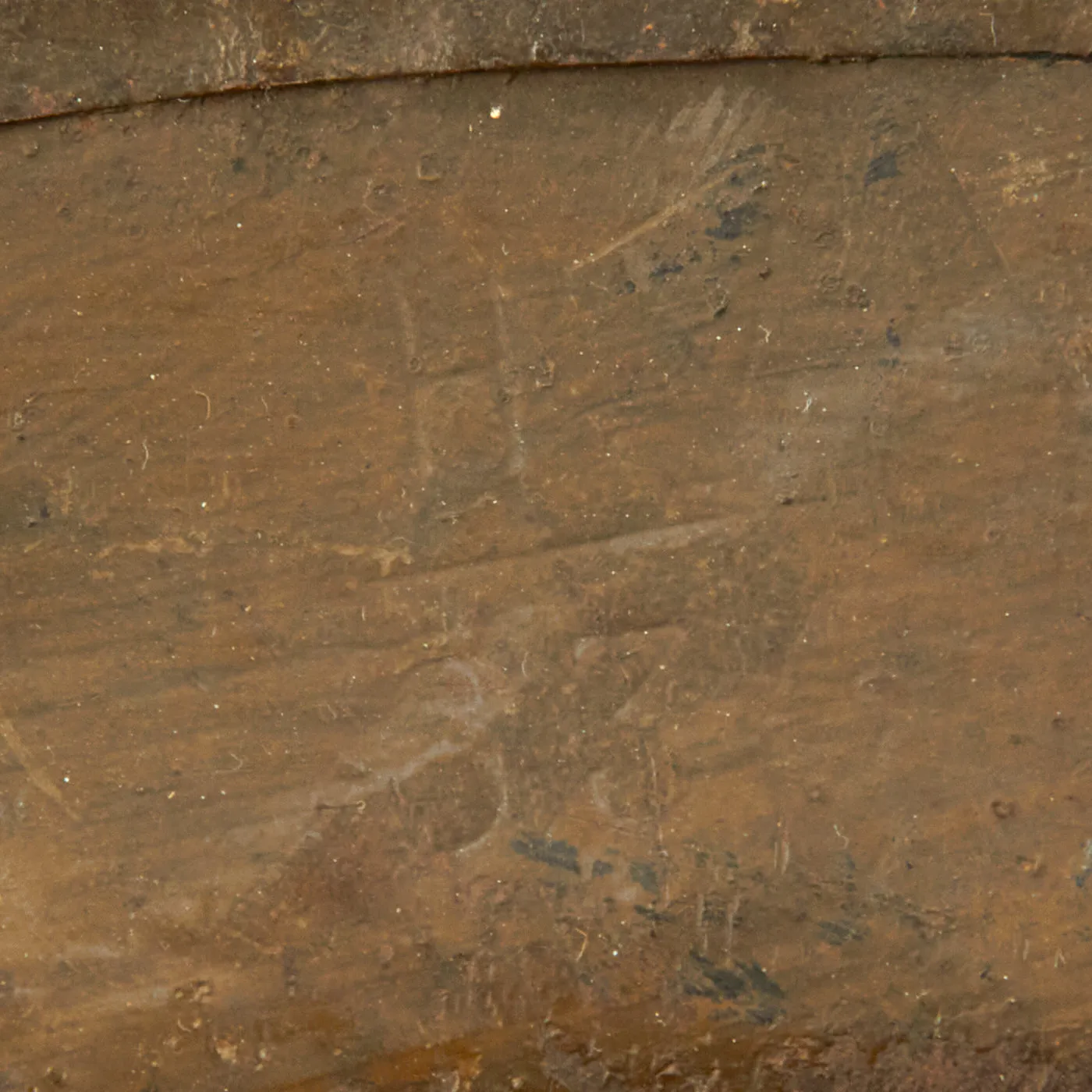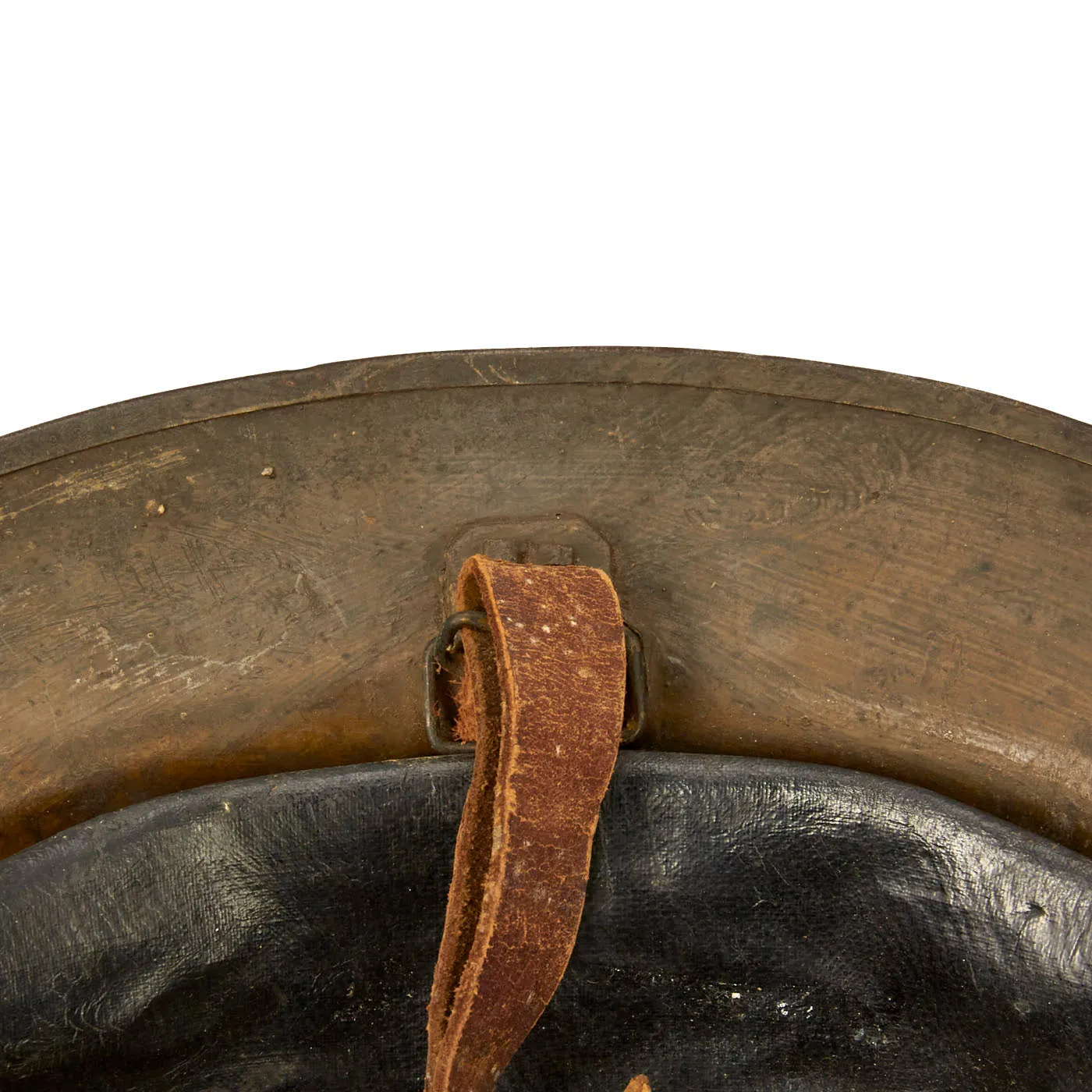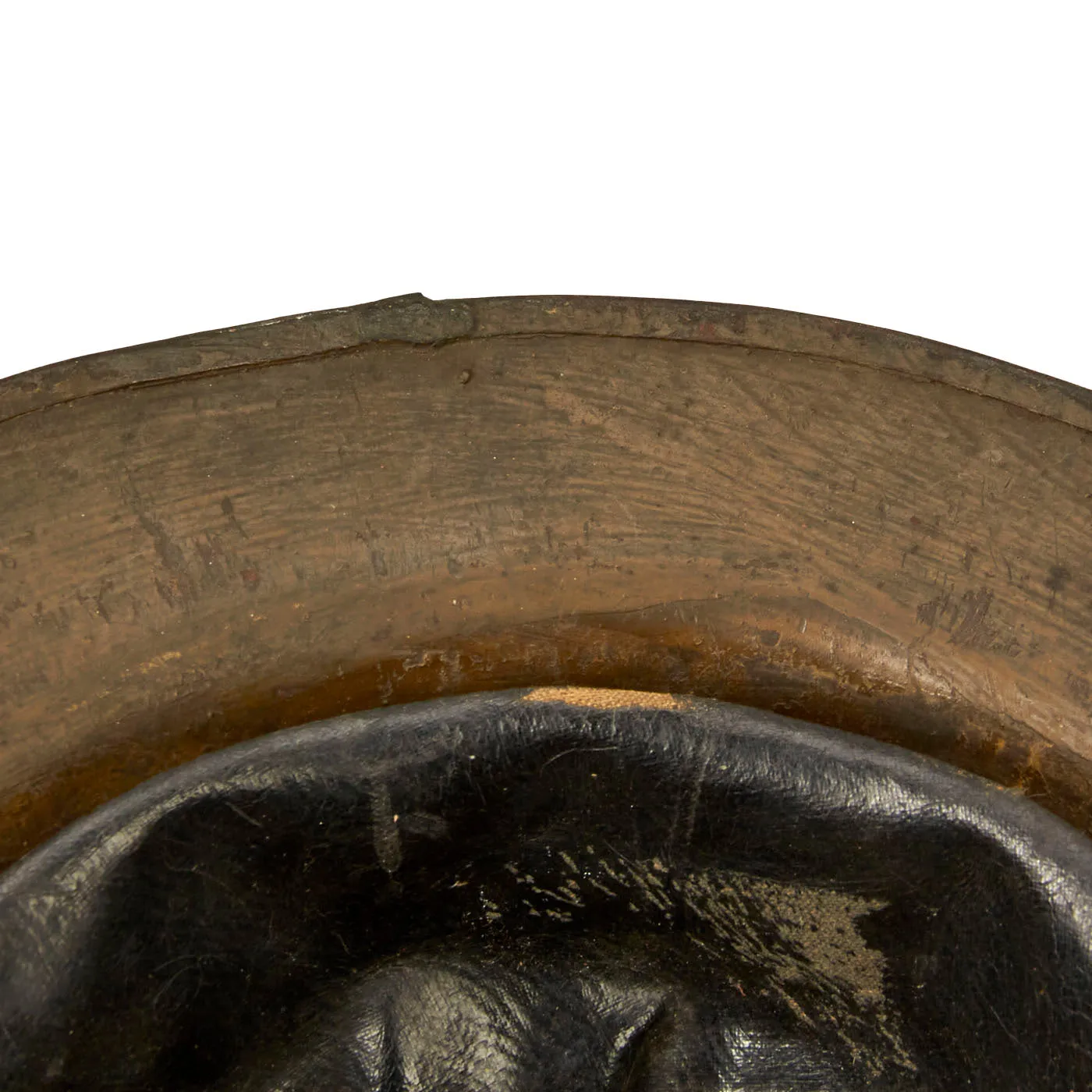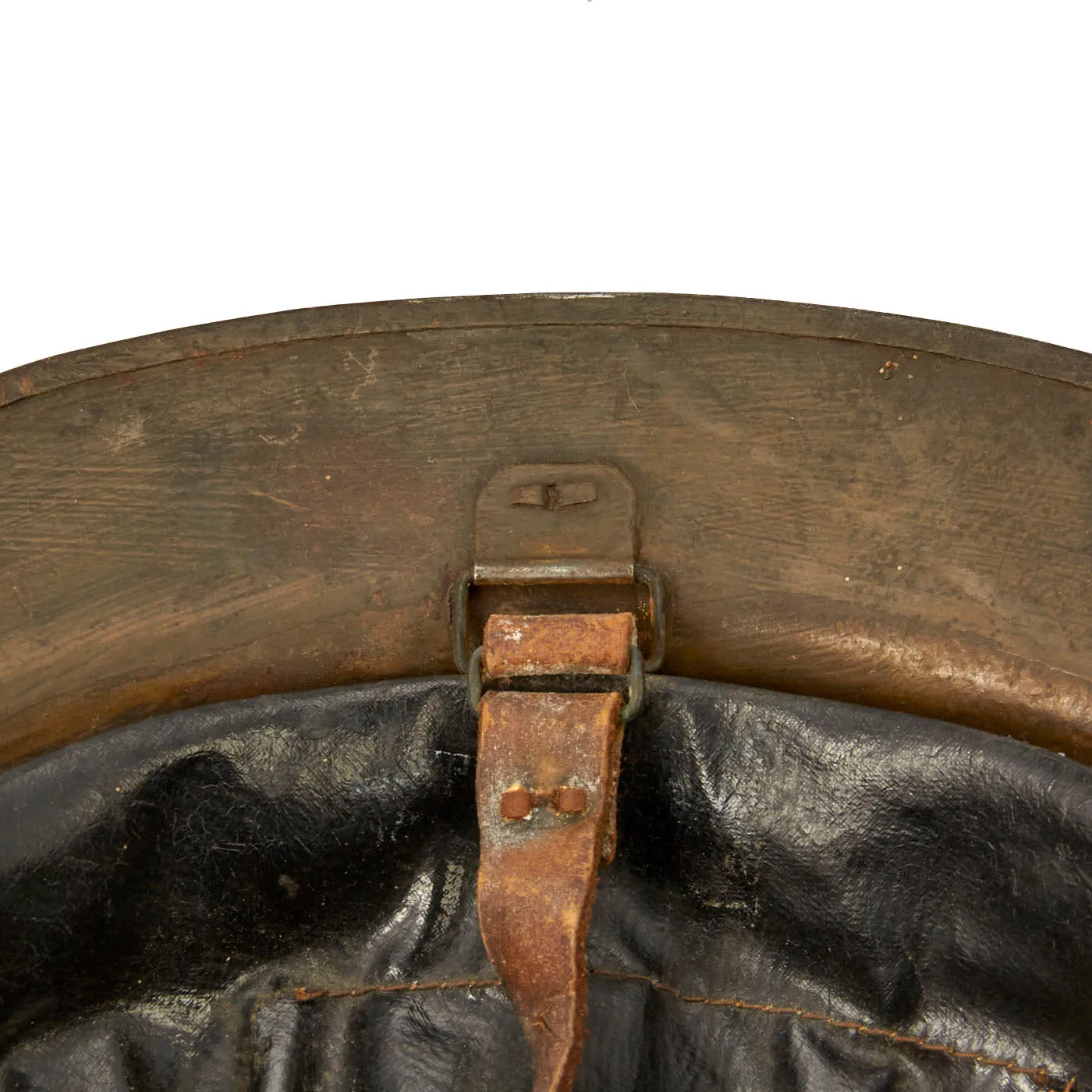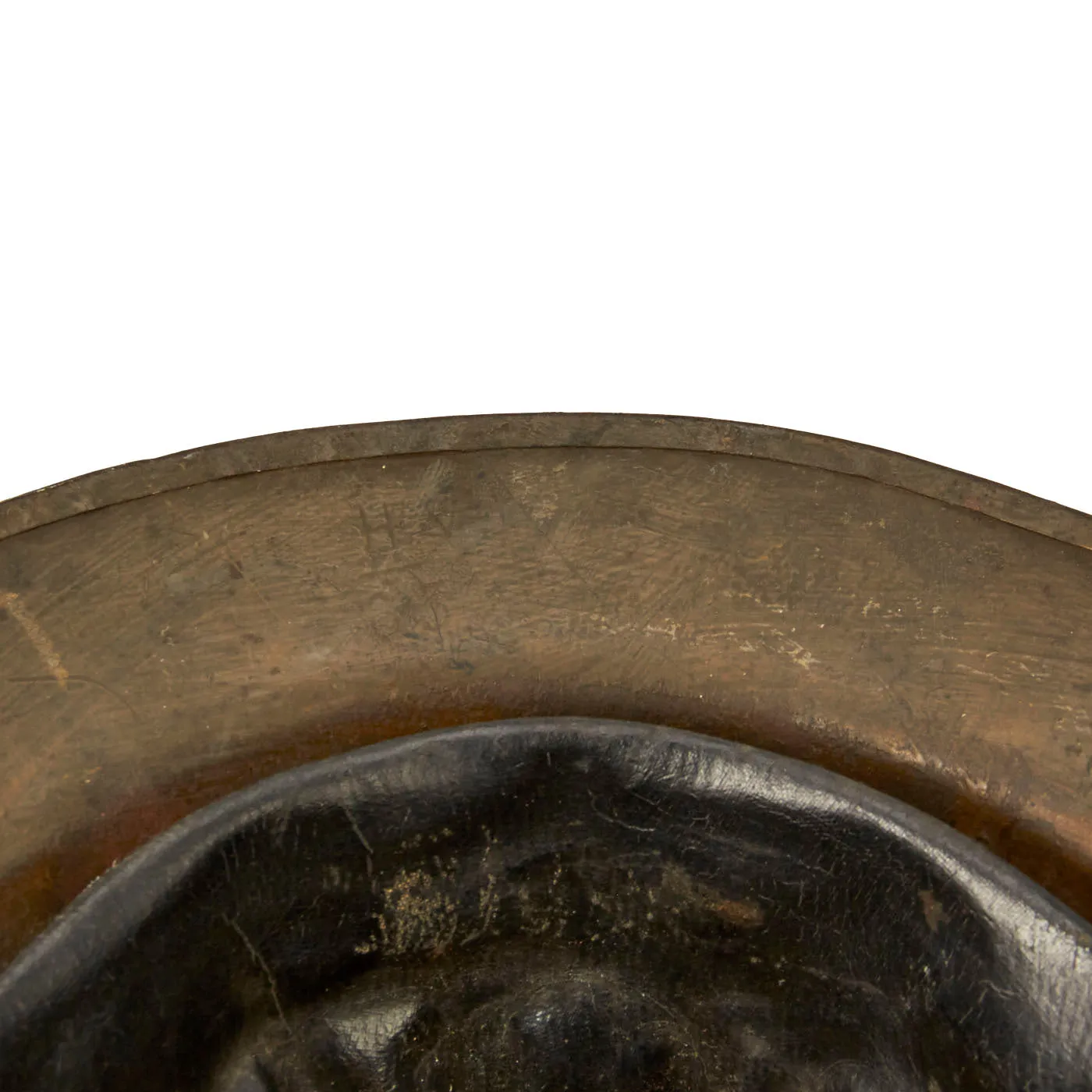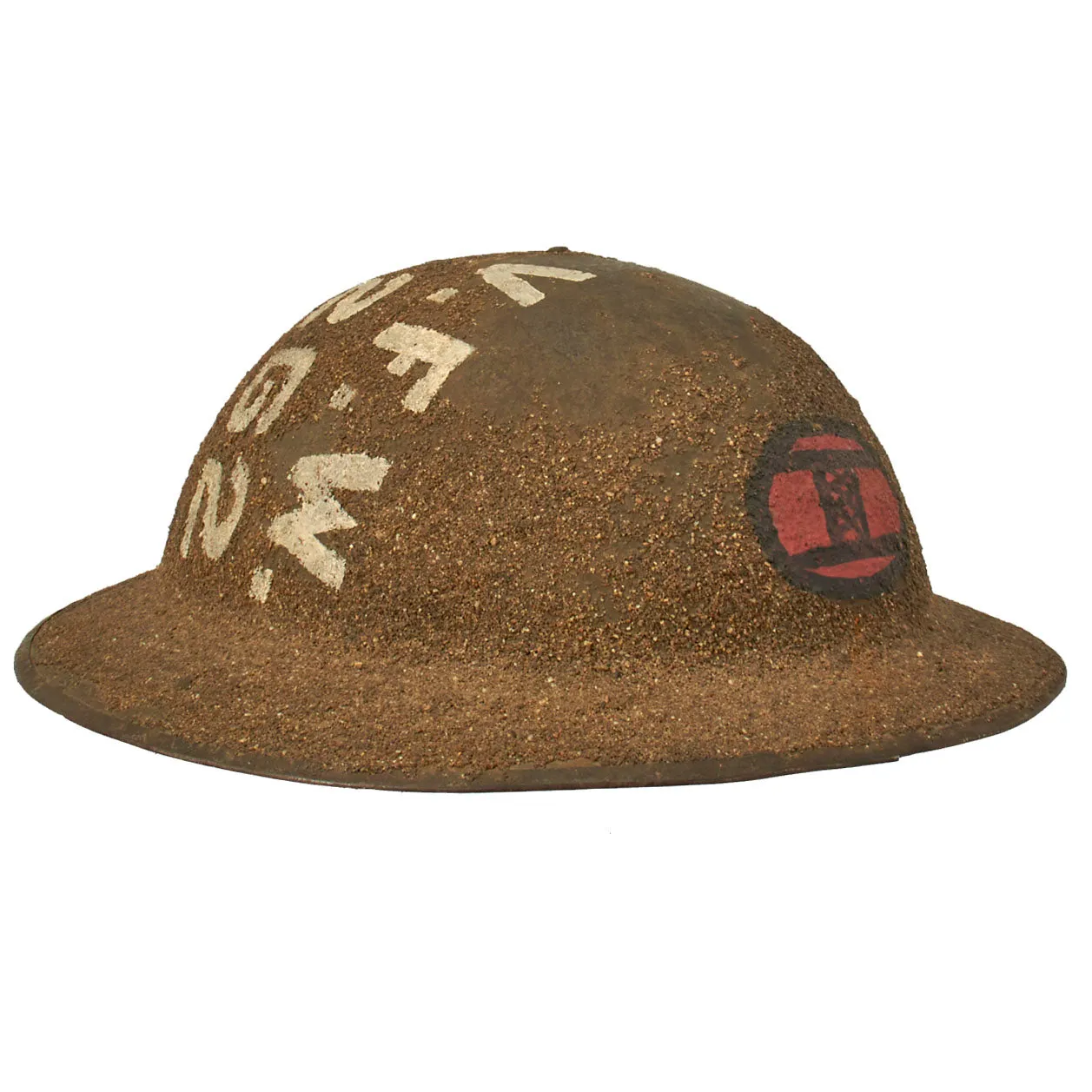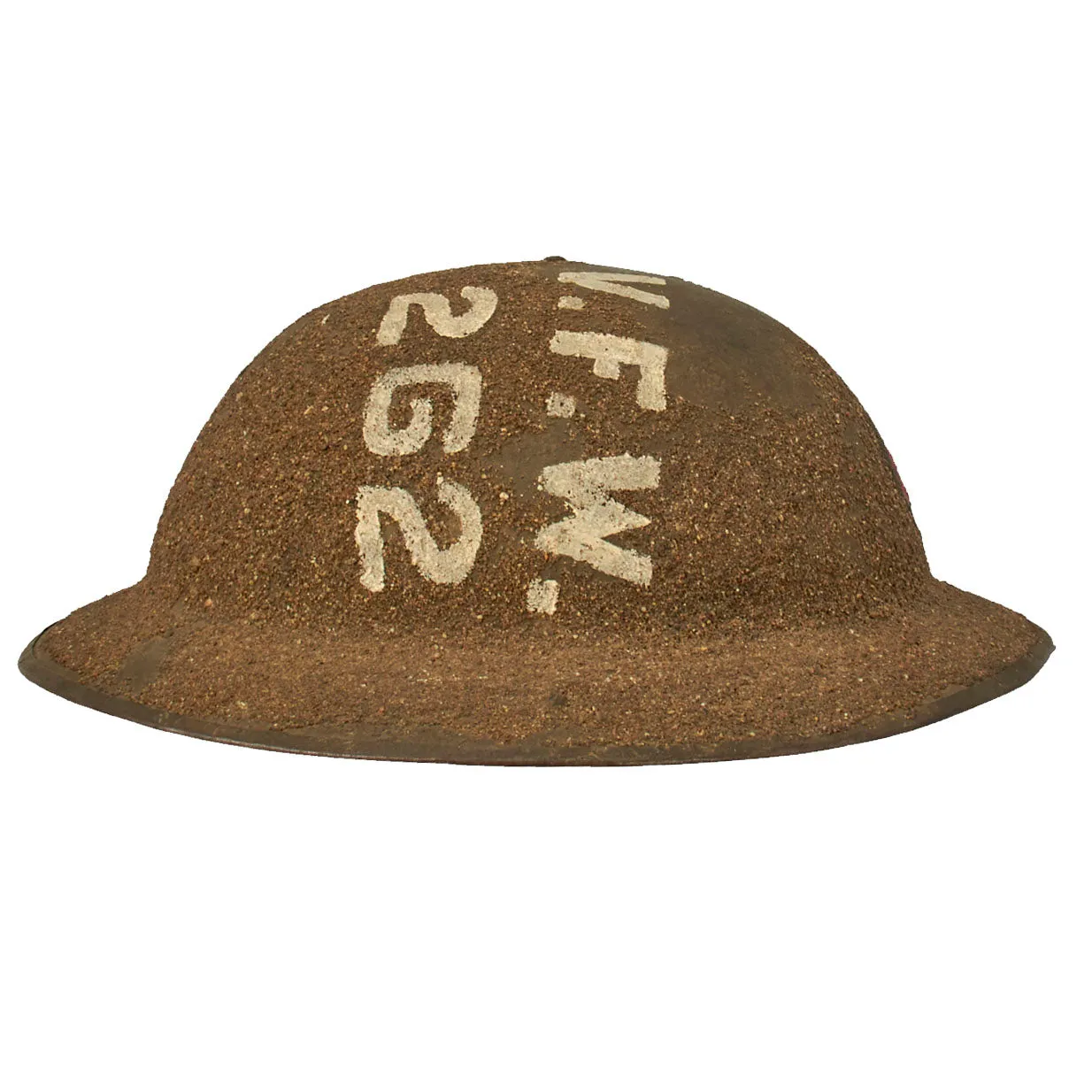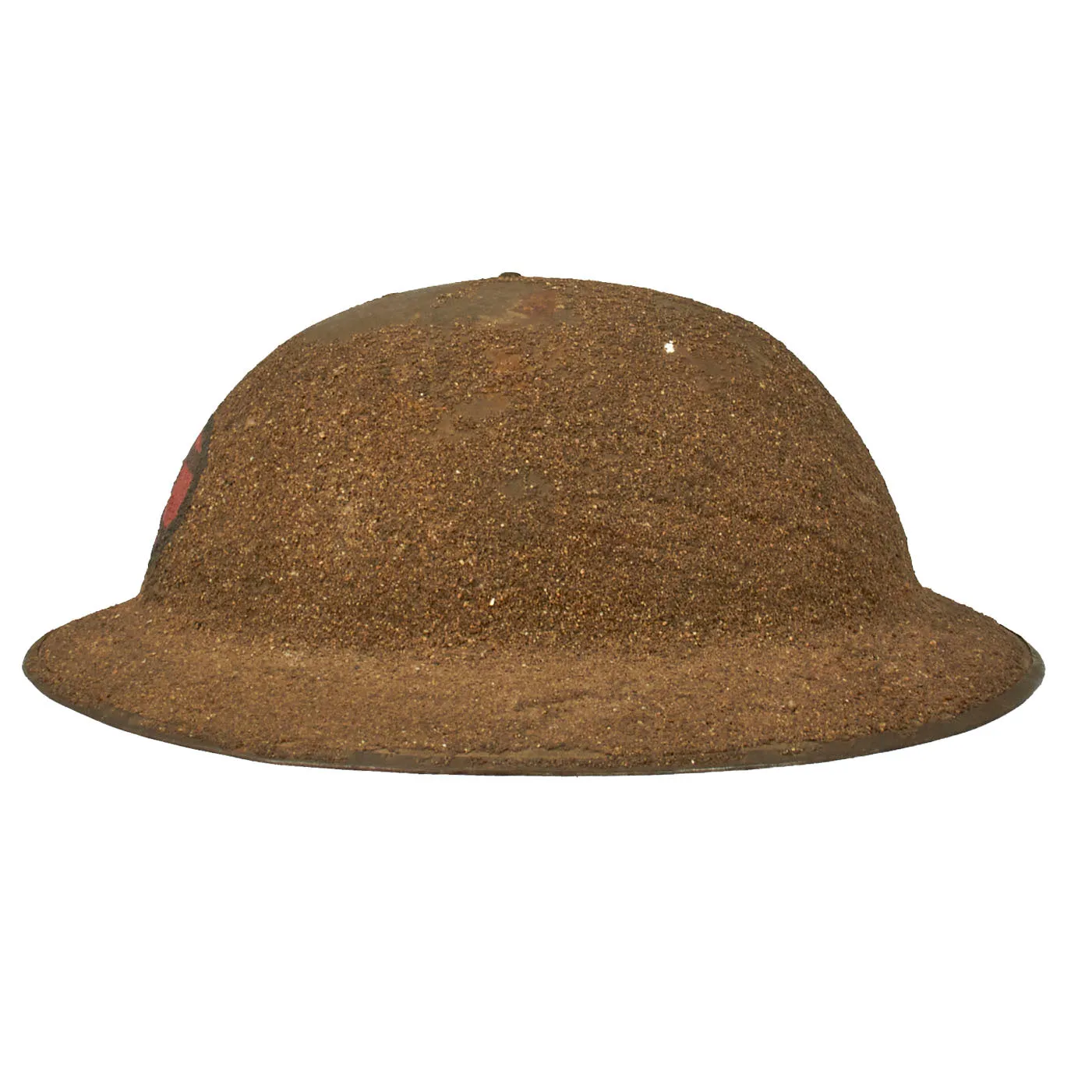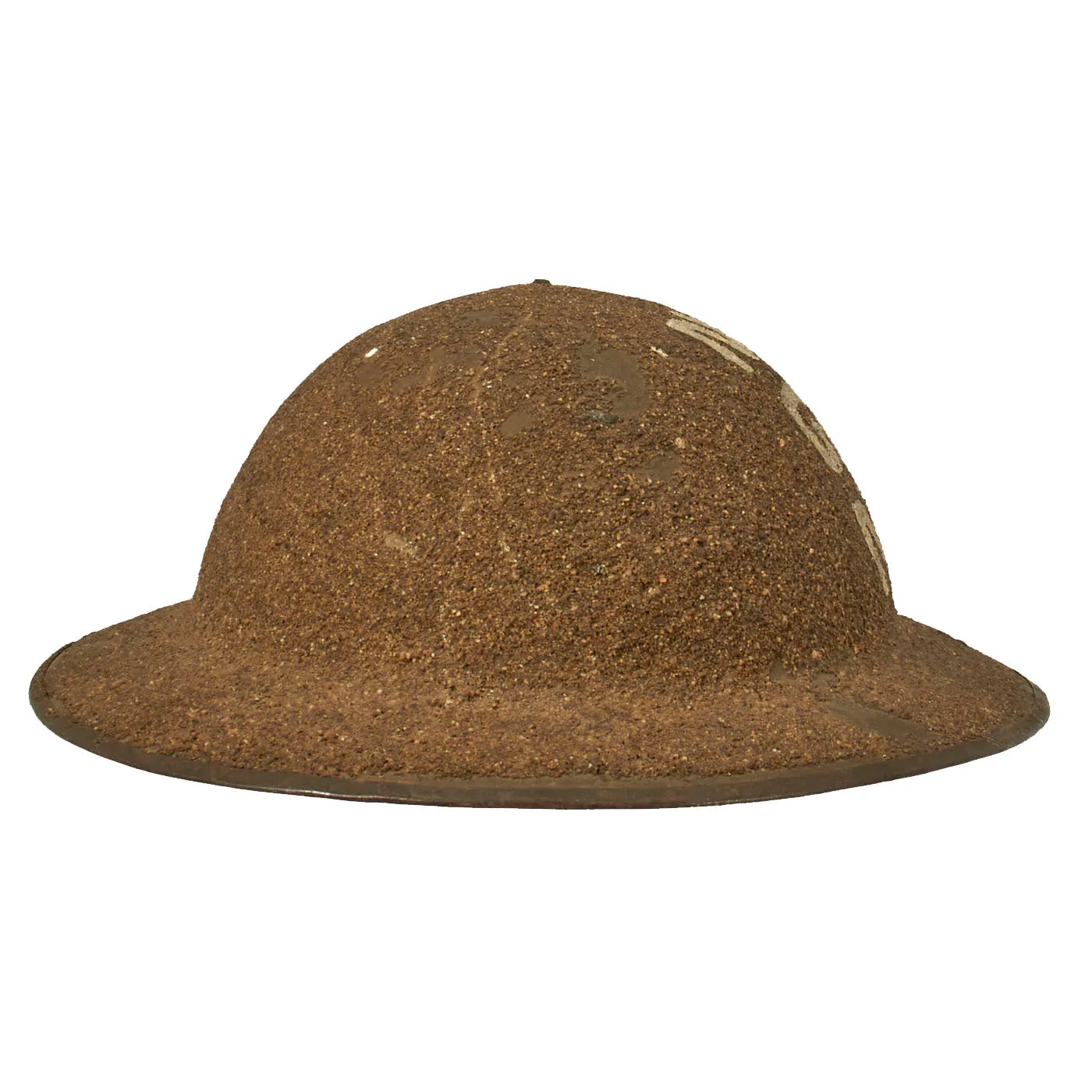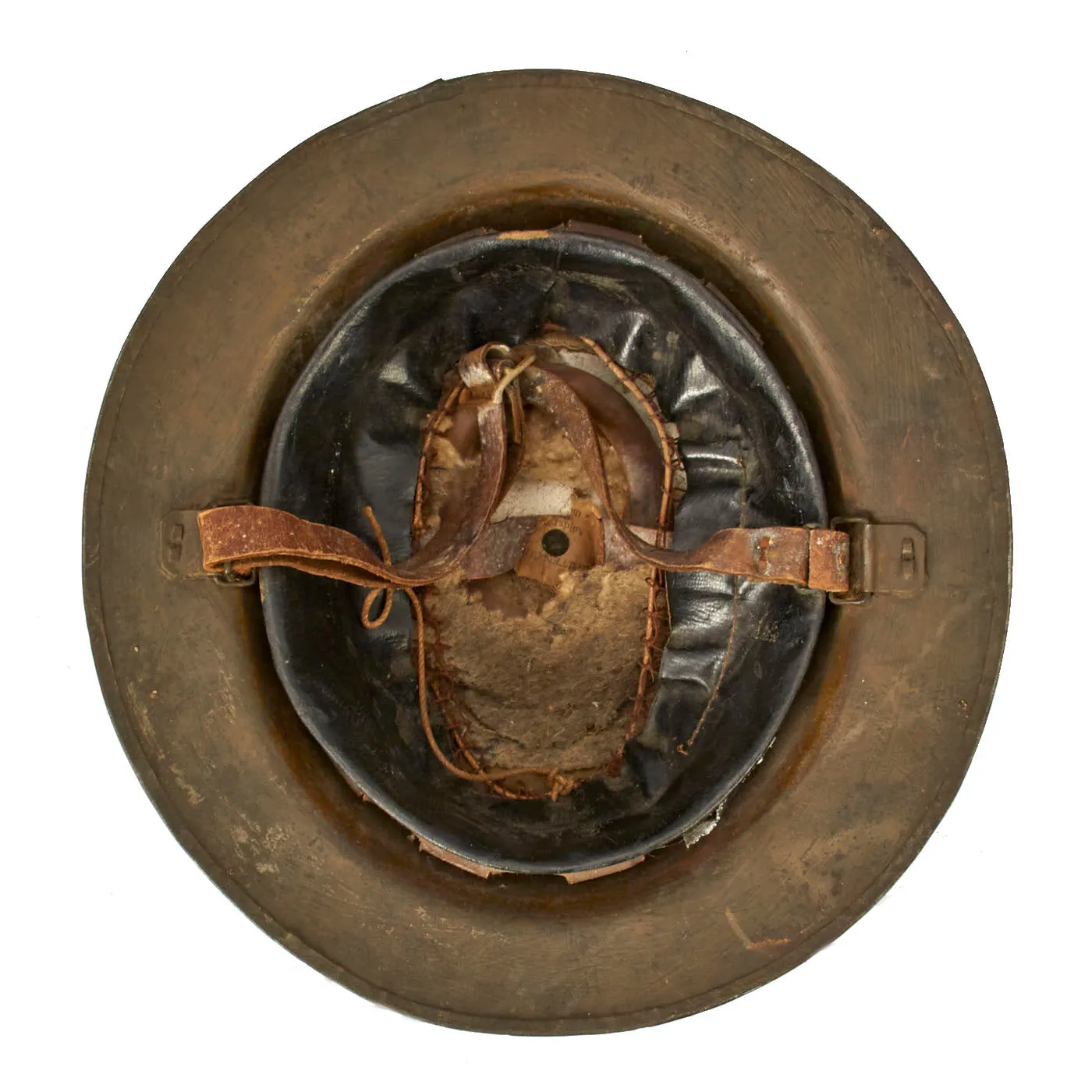Original Item: Only One Available. This is a very nice example of a U.S. M1917 "Doughboy" helmet, which features original period OD Green paint with a heavy layer of sand and grit, giving it a wonderful textured look, and an original liner. The added textured paint was to give the helmet “anti-reflective” properties which was extremely vital when trying to conceal yourself, especially at night. The best feature of all is the original hand painted Gold boxed monogram XXX inside an "O" (for "Old") inside the cross bars of an "H" (for "Hickory") on red background bordered in black insignia for the 30 infantry division aka the Old Hickory Division.
Also featured on the helmet is VFW 262 which indicates that this was also used as a display piece, as well as parade anniversary worn, giving this helmet even more of a beautiful touch!
The paint is in very good condition both inside and outside the helmet, with the expected wear from service. The liner is also in quite nice shape, with a very good oil cloth liner, and the top felt pad is still present, though a bit worn. The leather surrounding the liner has unfortunately deteriorated some, and the chin strap is present but in somewhat delicate condition. The liner support strap is still complete, which keeps the liner from falling out of the helmet. Also present is the seldom seen rubber “doughnut” at the top of the helmet. The British Mark I has a rubber ring sewn between two pieces of wool in the base of the helmet dome. The doughnut was added for the wearer's comfort. It was undoubtedly a welcome relief from having the helmet constantly bounce up and down on the top of the wearer's skull while running across no man’s land. Early Mark I helmets initially had this feature only to be discontinued in mid 1916 and brought back in 1917.
The underside of the rim is stamped H. V. / 634, indicating that the shell is one of the 400,000 British manufactured helmets supplied to the U.S. at their entrance into the war. The split pin rivets attaching the chin-strap bales further confirm this. The marking indicates that the helmet was produced by Hutton & Sons Ltd "H" using steel from Vickers Ltd "V", batch 634. Both of these companies were based in the steel-making city of Sheffield.
A great example of an authentic WWI "Doughboy" helmet, ready to research and display!
30th Infantry Division
The 30th Infantry Division was a unit of the Army National Guard in World War I and World War II. It was nicknamed the "Old Hickory" division, in honor of President Andrew Jackson. The Germans nicknamed this division "Roosevelt's SS". The 30th Infantry Division was regarded by a team of historians led by S.L.A. Marshall as the number one American infantry division in the European Theater of Operations (ETO), involved in 282 days of intense combat over a period from June 1944 through April 1945. In the present day the 30th Armored Brigade Combat Team is now a part of the North Carolina National Guard and their most recent combat deployment was in 2019.
The division was originally activated as the 9th Division (drawing units from North Carolina, South Carolina, Virginia and Tennessee) under a 1917 force plan, but changed designation to the 30th Division after the American entry into World War I in April 1917. It was formally activated under its new title in October 1917, as an Army National Guard division from North Carolina, South Carolina, Georgia, and Tennessee.
In May 1918 the division was sent to Europe and arrived in England, where it departed for the Western Front soon after. The division, along with the 27th Division, was assigned to the U.S. II Corps but did not serve with the main American Expeditionary Force (AEF) and was instead attached to the Second Army of the British Expeditionary Force (BEF), trading American equipment for British equipment.
The major operations the 30th Division took part in were the Ypres-Lys, and the Somme offensive, in which it was one of the two American divisions that assisted the Australian Corps to break the Hindenburg Line in the Battle of St. Quentin Canal. The division had, in three months, from July until October 1918, sustained 1,237 officers and men killed in action (KIA), with a further 7,178 wounded in action (WIA) or missing in action (MIA).




